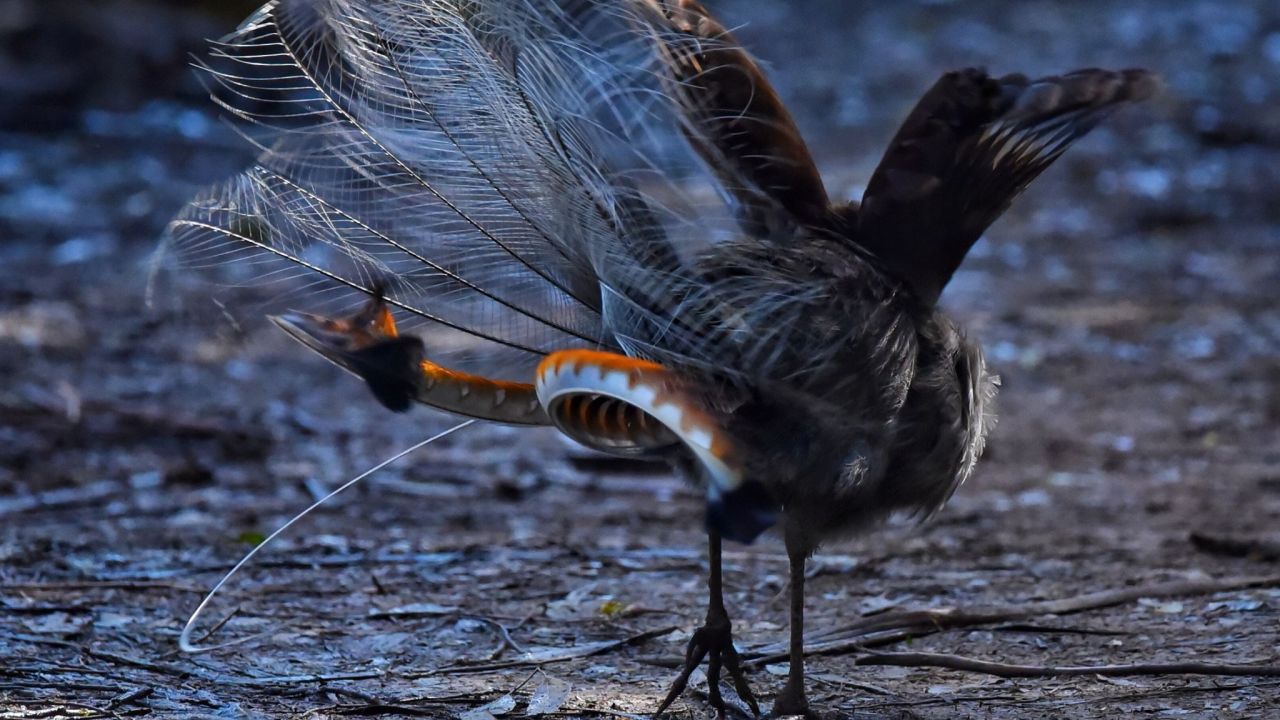Superb lyrebird (Menura novaehollandiae): an Australian songbird.
Kingdom: | Animalia
Phylum: | Chordata
Class: | Aves
Order: | Passeriformes
Family: | Menuridae
Genus: | Menura
Species: | M. novaehollandiae

Size and Weight:
Lyrebirds measure 31 to 39 inches in length, including their tail. Males tend to be slightly larger than females. Females weigh around 2 pounds, and males weigh around 2.4 pounds.
Appearance:
The superb lyrebird looks like a large brown pheasant, with powerful legs and a long tail. They are primarily gray-brown with a reddish outer wing. Their bill, legs and feet are black. Adult males have an ornate tail, with special curved feathers that assume the shape of a lyre when on display. While the tails of females and young males are also long, they lack specialized feathers. For this reason, females and young males may resemble Albert’s Lyrebird. However, the two species differ in their range and color of underparts. The superb tends to be grayish.

Diet:
Their diet includes insects, spiders, worms and seeds. They find food by scratching with their feet through the leaf litter. While adult males tend to forage alone, females and young males may be seen feeding together.
Habitat:
Superb lyrebirds are found in rainforests. While they are a primarily ground-dwelling species, they roost in trees at night. They are sedentary and rarely move large distances. Their home range is about 6 miles in diameter.
Geography:
Their range includes the southeastern Australian mainland and southern Tasmania.

Breeding:
Superb lyrebirds breed from June to October each year. The male secures a territory and then makes a presentation to attract a potential mate. He builds one or two small mounds of dirt, which he will use as a podium for his song and dance. He throws his tail forward over his body and shakes it on display while singing an intricate song made up of sounds from his surroundings. If the display is to the liking of the female, they will mate. Throughout the breeding season, the male will mate with several females.
After mating, the female alone builds the nest, incubates the eggs and cares for the young. She typically builds the nest on the ground or on rocks, tree stumps, or in caves. The nest is constructed of sticks with a soft lining of fern, roots and feathers. She lays a single egg that is brown to purple in color. After 50 days, the egg hatches. The chick remains in the nest for about 6 weeks. Young males do not grow their lyre tails until they are 3 to 4 years old.
Social Structure:
Superb lyrebirds typically live solitary lives. Adults usually live in territories, but young birds without territories may associate in small groups that can be single or mixed-sex. They are not strong fliers and are not highly mobile, but will fly if they sense immediate danger. They are not highly mobile, often remaining within the same area for their entire lifespans.
The superb lyrebird is known for its song. They communicate through various noises. About 80% of the song consists of expert mimicry, which can include anything heard in the bird’s immediate surroundings like chainsaws, car engines, dog barks and local native birds. They also emit a series of whistles and cackling notes used as territorial calls.
Lifespan:
Superb lyrebirds can live up to 20 years of age.
Threats:
The superb lyrebird was driven almost to extinction due to habitat loss and hunting for its stunning tail feathers. While protection methods have helped stabilize its population size, it remains under threat from feral cats and foxes, as well as human urban development.

Conservation Status:
The superb lyrebird is listed as of Least Concern by the IUCN’s Red List of Threatened Species.
Source: The Australian Museum and The State of Victoria Department of Environment, Land, Water and Planning.
